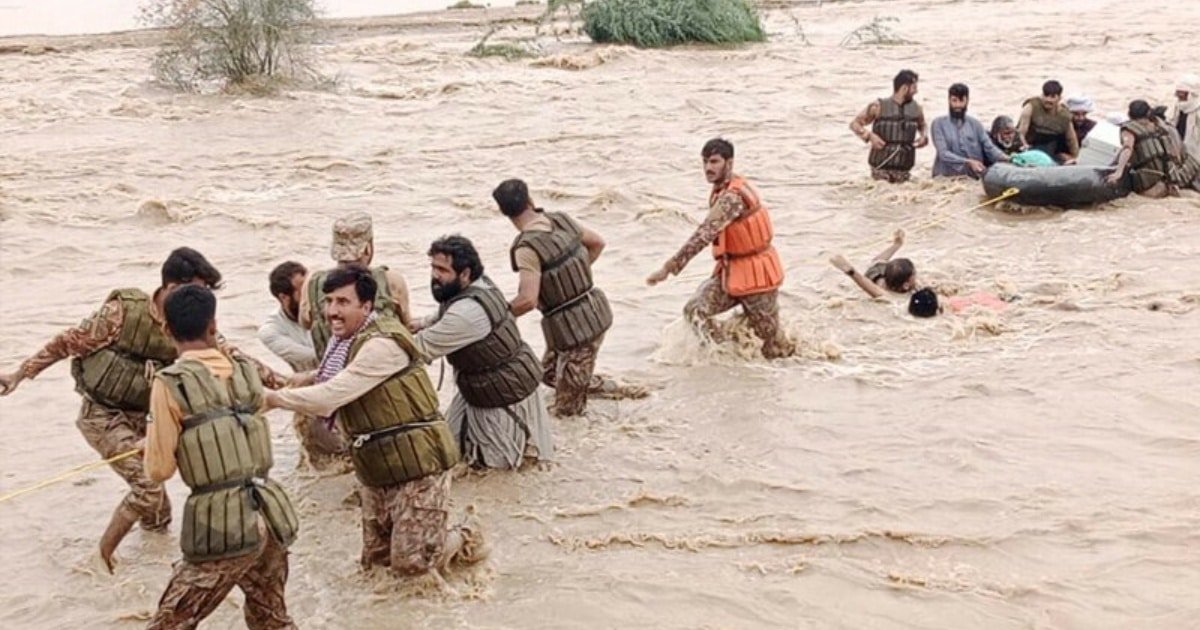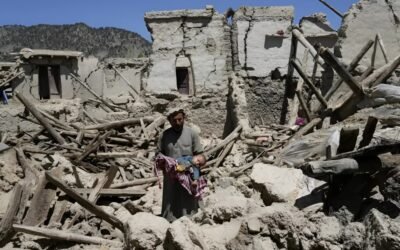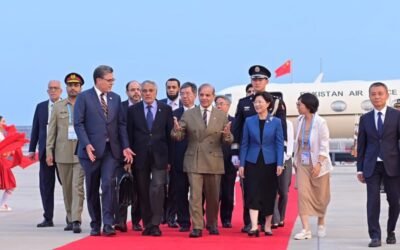The Pakistan Army has always remained the central and best-trained institution for disaster relief activities in the nation, ranging from the disastrous 2005 earthquake to the disastrous floods of 2022 and the current crisis of 2025. With its strong and effective infrastructure, personnel, and logistics, the army has remained in the lead of rescue operations. Whether it be relief and rehabilitation efforts, Pakistan Army has been working in cooperation with civilian governments as well as foreign aid agencies.
2005 Earthquake: The Dawn of a New Era in Disaster Relief
The 7.6 earthquake on 8th October 2005 still stands in history as one of Pakistan’s deadliest natural disasters. It took the lives of more than 80,000 individuals and displaced millions, primarily from the region of Azad Jammu and Kashmir (AJK) and Khyber Pakhtunkhwa. The magnitude of devastation was unforeseen and the nation’s disaster management system was not adequate at the time. The initial phase involved the Pakistan Army taking charge and deploying troops almost immediately for rescue operations.
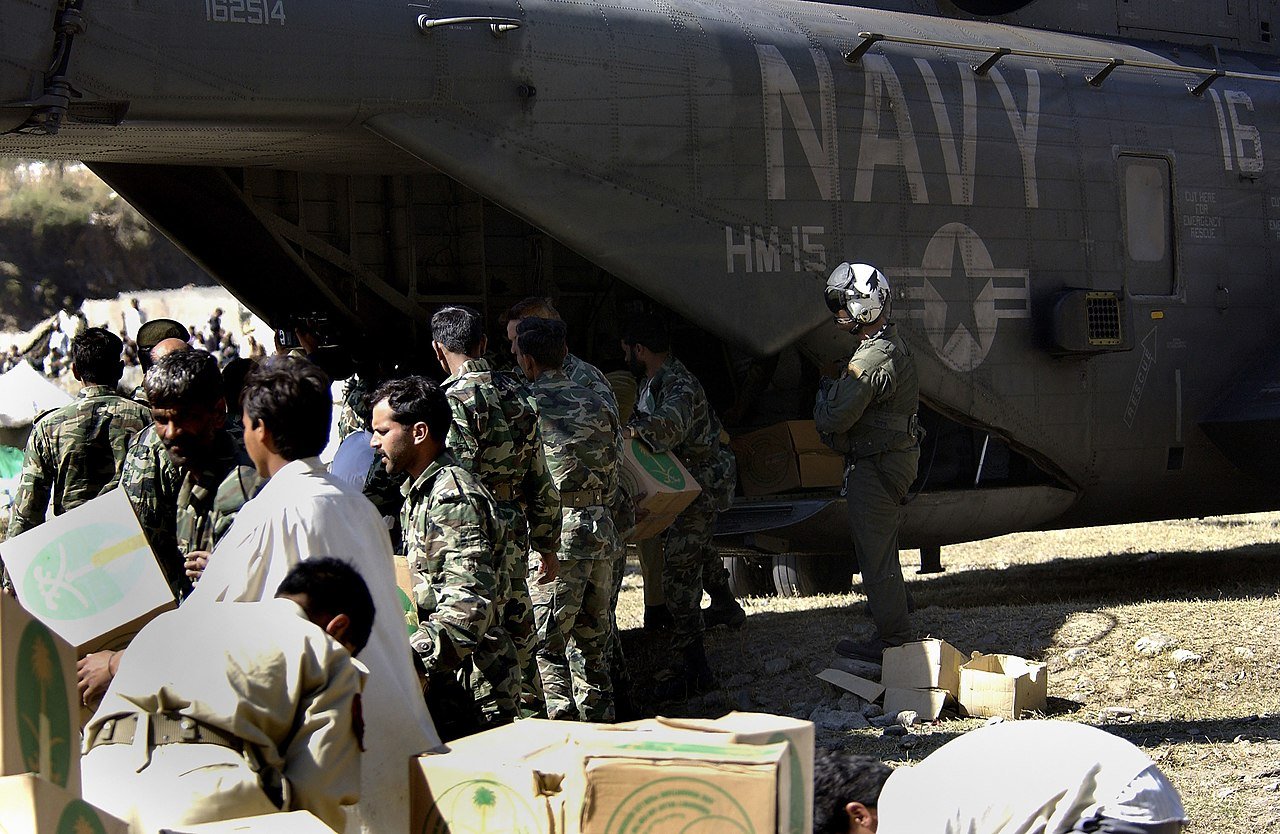
Source: wikipedia
Hours after the earthquake, the army engineers were sent to open up major road accesses blocked by debris to remote places such as Muzaffarabad, the AJK capital. This was a humongous task. Landslides had completely severed land routes to many forward areas. Army Aviation Corps helicopters played a key role in airlifting thousands of tons of relief kits and bringing down more than 7,650 injured persons from remote mountain villages. The medical corps of the army also played a significant role by establishing field hospitals that attended to thousands of patients and conducted life-saving operations. This massive, coordinated military effort brought out the army’s special strengths in dealing with complex logistical challenges as well as operating in hard terrain. It also acted as a wake-up call and prompted the formation of the National Disaster Management Authority (NDMA) in 2007 to institutionalize and organize disaster response processes.
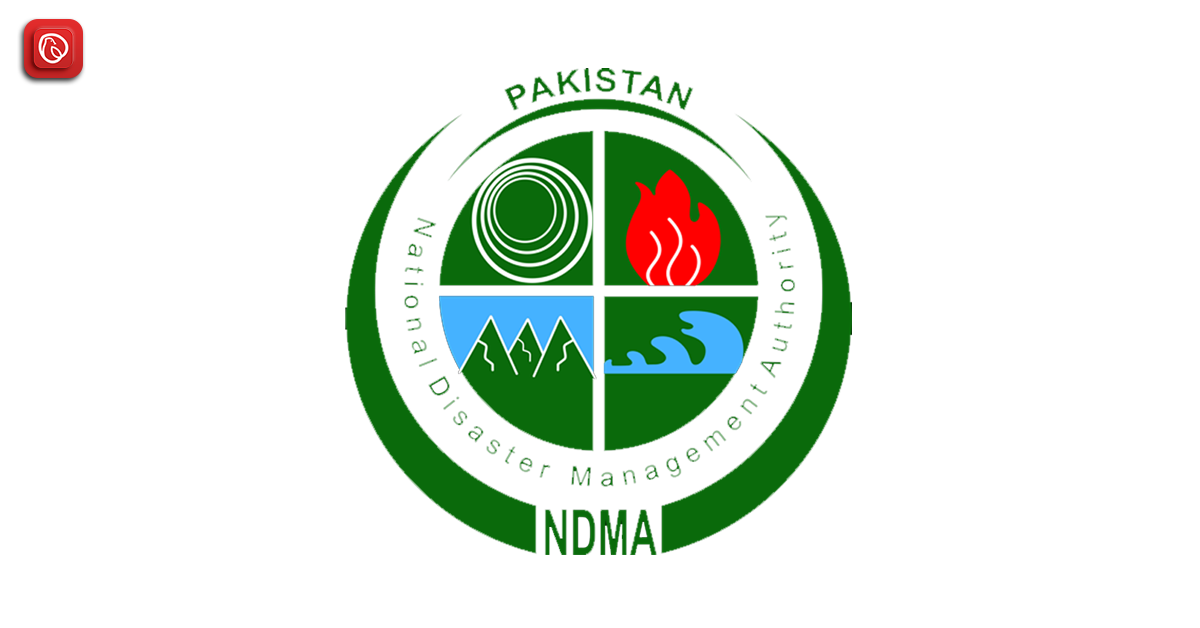
Source: graana
2022 Floods: A Test of Resilience in the face of Climate Change
In 2022, Pakistan was struck by a record monsoon season that caused devastating floods. A third of the nation was inundated and the flood waters impacted more than 33 million individuals. The sheer magnitude of the disaster, made worse by climate change, had paralyzed civilian institutions. As in past instances, the Pakistan Army was the first to respond by mobilizing its personnel to aid in rescue and relief efforts in all four provinces.
Source: Al-Jazeera
The role of the army was multi-dimensional. They carried out large-scale rescue operations by evacuating citizens through boats and helicopters from flooded zones. Relief and medical camps were set up in the flood-affected districts and handed out food, shelter, and medical supplies to millions of displaced citizens. The engineering and logistics corps of the army operated round the clock to repair destroyed road networks, bridges and communication networks. Rebuilding these routes were indispensable for the distribution of humanitarian assistance through land. Military personnel, in cooperation with the NDMA, reported on a daily basis on the situation. In times of chaotic uncertainty, the Pakistan Army displayed high organizational discipline and transparency. The response of the army was proof of its institutional resilience and its capability to serve as a key supporting pillar for the civil administration during national disaster.
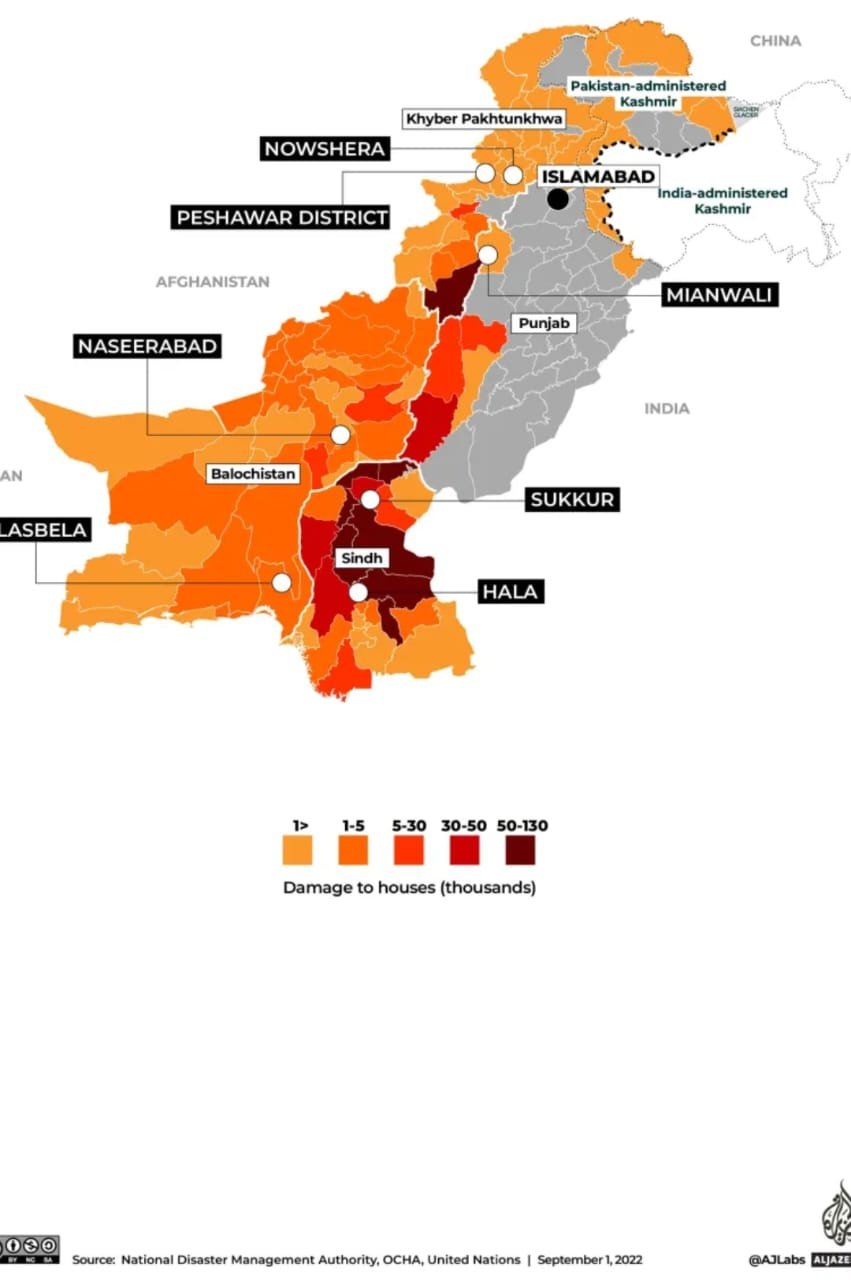
Source: Al-Jazeera
2025 Floods: Current Operations and Developing Strategies
The recent floods of 2025 due to heavy rains and opening of dams in adjoining countries have once again placed the Pakistan Army on red alert. The Punjab government specifically asked for the mobilization of army troops in various districts like Lahore, Kasur and Sialkot. The rivers Ravi and Chenab are at an ‘exceptionally high flood’ level.
In spite of a busy year of both external and on-going internal military conflicts, the military is also actively involved in rescue and relief operations evacuating humans and animals from flood-prone areas. Military personnel with boats and rescue equipment are assisting civil administration and other emergency first responders such as the Rescue 1122. Relief camps have been established to shelter, feed and treat the displaced personnel. This ongoing effort is yet another instance of the persistent reliance on the military’s resources and organized structure to manage large-scale disasters. The army’s role has also evolved to include support for more modern disaster management practices. These involve providing logistical support for early warning systems and coordinating with international partners for aid and disaster management.
On the directives of the Prime Minister and Army Chief Field Marshal Syed Asim Munir, relief operations are ongoing in various districts, involving Pakistan Army, 10 Corps, 11 Corps, FC, and Rangers. Additionally, an engineer brigade and 30 units, including 19 infantry, 7… pic.twitter.com/tkrw1tgpHZ
— Mohsin Ali (@Mohsin_o2) August 27, 2025
A Pillar of National Stability
From the 2005 earthquake to the floods of 2022 and 2025, disaster relief efforts of the Pakistan Army have been consistent. Its organizational capacity, logistical capabilities as well as adherence to discipline makes it an indispensable asset in times of national disaster. Although civilian agencies such as the NDMA have been set up to advance disaster management as a whole, the military continues to be the most effective force for quick response on a large scale in emergencies. The persistent and efficient deployment of the army during these crises exemplifies its core function not only as a defense force but also as a supporting column of national stability and a life support for the Pakistani citizens.
You May Like To Read:

